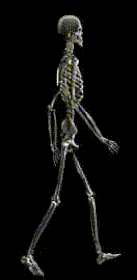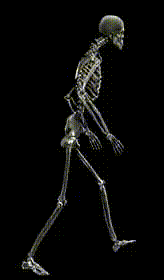In the 1980s, Karl Müller lived in a mud house in the middle of paddy fields in Korea for many years.
From the rollover approach to the walk-on-air concept
However, Karl Müller discovered new methods for recreating the feeling of standing and walking in paddy fields even more accurately. His efforts have made it possible to bring this special sensation to the everyday lives of urban people. What he had learned from thousands of cases he had seen was also backed up by numerous studies: People who find it more comfortable to stand and walk are also physically healthier. In light of this insight, Müller sold the entire MBT Group in 2006 to investors who wanted to continue to focus on the rollover principle. Karl Müller then began to focus entirely on researching and developing the soft, springy movement concept – kybun. This led to the development of the kybun mat, kybun shoe and kybun treadmill products.
The feeling of standing on a soft, springy surface
Karl Müller’s kybun MechanoTherapy is an empirical, scientific process that has led to these discoveries. It has enabled the development of products that bring the comfort and health benefits of nature’s soft, springy terrain into everyday urban life. After many years of research and development, Müller and his team found a way of perfectly recreating the feeling of standing and walking in paddy fields. By standing on the elastic, springy kybun mat and walking around in kyBoot shoes with air-cushion soles, you can strengthen your feet, develop a more upright posture, relax your muscles, protect your joints and improve your blood circulation.
We can walk as much as we like but if the quality of the movement is wrong, it will make us even less mobile and our manner of walking even more painful.
A rolling stone gathers no moss. It’s not the entire person that stops, just individual muscles and muscle groups. That’s a far greater problem than the quantity of movement! It’s not enough to say: ‘I walk/jog/hike regularly.’ That would be like saying: ‘I eat enough carbohydrates, vegetables and meat.’ Yes, but what about the vitamins, minerals and essential nutrients?
It has been proven that a healthy diet is characterised by the quality or nutrient density rather than the quantity of food consumed. The same applies to exercise. Getting plenty of exercise is not the only crucial factor for a healthy body. In reality, it is the quality of the exercise that ensures long-term health and well-being.
By not exercising the small, deep layers of balancing muscles, only the outer layers of muscle are trained, while the small balancing muscles relax. Unless you spend a few hours a day walking barefoot in the sand, walking on soft, springy surfaces or a tightrope or doing balancing and stretching exercises, you will become less mobile because muscle imbalances immediately cause ‘fascia agglutinations’ that minimise the scope of movement of the joints, meaning you become increasingly immobile over the course of your lifetime.
What are fasciae and why do they play such a key role when it comes to movement and freedom from pain?











